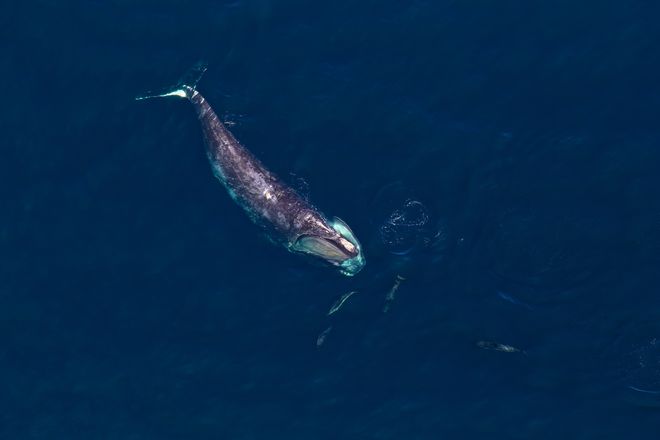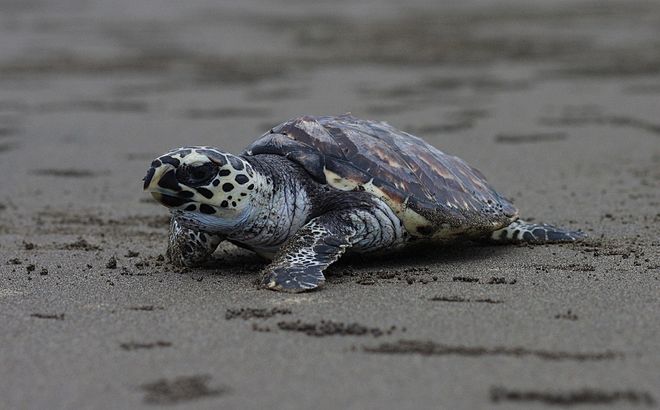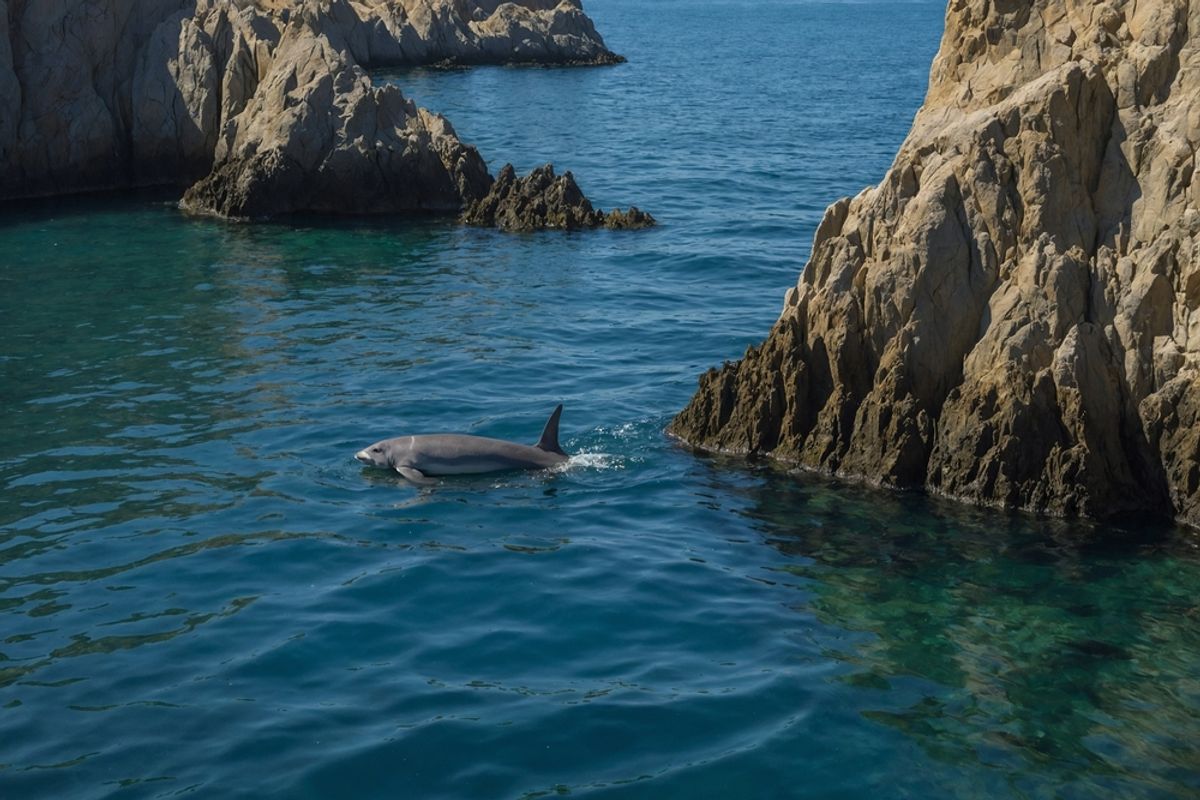Key Takeaways on Rare Ocean Animals:
- The rarest ocean animal is the vaquita — Spanish for “little cow”— which is a tiny porpoise found only in Mexico’s Gulf of California. It’s also the world’s most endangered marine animal, with as few as 10 individuals left in the wild.
- Some of the rarest ocean animals can live in the unexplored depths of the ocean, including areas like the “midnight zone” where light from the surface cannot penetrate.
- The most mysterious ocean animal could be several species, including the ghostly ‘Casper’ octopus.
Despite all we’ve learned about planet Earth, the ocean remains as vast and mysterious as ever. It spans roughly 70 percent of the globe but is still largely unexplored, and scientists believe that more than 90 percent of marine species have yet to be classified.
Of those we do know, many are so elusive or imperiled that you’re astronomically unlikely to encounter them in the wild.
When biologists speak of rarity, “we actually mean a few different things,” says Craig McClain, who studies deep-sea life at Lafayette University. “Not all rare species are rare for the same reasons.”
Some have small but widespread populations, while others are plentiful within a restricted geographic range or ecological niche. Some have probably always existed at low numbers, but McClain notes that many are rare “because humans have made them that way through overfishing, habitat loss, or climate change.”
Here are seven of the ocean’s rarest inhabitants — creatures that remind us how much of the world remains beyond our reach, and how fragile its wonders are.
Read More: 5 Endangered Animals You Should Meet
What Is The Rarest Ocean Animal?
The vaquita — Spanish for “little cow”— is a tiny porpoise found only in Mexico’s Gulf of California. It’s also the world’s most endangered marine animal, with as few as 10 individuals left in the wild. Less than five feet long, with dark patches lining its eyes and mouth, the vaquita wasn’t discovered until 1958. Now it’s listed by the International Union for Conservation of Nature (IUCN) as critically endangered, just one step above extinction.
Rare ocean animal, the vaquita
(Image Credit: AbdulSalam453/Shutterstock)
The main cause of its decline, experts say, is bycatch: the creatures become ensnared in gillnets set for totoaba, a species of fish prized for its swim bladder, a delicacy in Chinese cuisine. Despite international bans, illegal fishing persists, and conservationists are now racing to keep the vaquita.
Read More: The Pygmy Right Whale Was the Family Weirdo, and it Never Went Extinct
1. Rare North Atlantic Right Whale
On the other end of the size spectrum, there’s another cetacean on the brink: the North Atlantic right whale. Commercial whalers, on the hunt for blubber and oil, had already reduced their numbers dramatically by the late 1800s. Today, about 360 individuals remain, including 70 reproductively active females.


Rare ocean animal, the North Atlantic Right Whale.
(Image Credit: lego 19861111/Shutterstock)
As they migrate along the east coast of the U.S., these whales are still threatened by ship strikes and entanglement in fishing gear. They sometimes surface near busy ports, where collisions can be fatal. Scientists track the species by the unique patterns of rough skin on their heads, called callosities, and the findings are grim: since 2017, North Atlantic right whales have experienced an ongoing “Unusual Mortality Event,” with more than 150 individuals dead, seriously injured, or in poor health.
2. Kemp’s Ridley: The Most Endangered Sea Turtle
The smallest and most endangered of all sea turtles, the Kemp’s ridley nests along the Gulf Coast of Mexico and Texas. Its synchronized mass nesting events — called arribadas, Spanish for “arrivals”— once drew thousands of females to the shore. By the 1980s, however, only a few hundred came. Today, they’re classified as critically endangered.


Rare ocean animal, Kemp’s Ridley sea turtle.
(Image Credit: Mahmud Hidayat/Shutterstock)
After a record low of just 702 nests in 1985, fishing regulations and protections for nesting beaches helped the population rebound some 15 percent each year through the 1990s and 2000s. That said, oil spills and warming seas continue to pose a major threat to Kemp’s ridleys.
Read More: Brain Coral Looks Like a Brain, and Can Live up to 900 Years
3. Critically Endangered Chagos Brain Coral
Corals might seem less charismatic than marine mammals, but the Chagos brain coral is one mesmerizing hunk of polyps. With labyrinthine folds meandering across its dome-like surface, it bears an eerie resemblance to its namesake. What’s more, it can live for centuries.
This remarkable coral, found only in the remote Chagos Archipelago of the Indian Ocean, is also critically endangered. The main culprit is climate change — repeated marine heatwaves have bleached much of the coral, leaving the survivors susceptible to disease. On the bright side, as of 2010, its habitat is part of the Chagos Marine Protected Area, which encompasses the world’s largest coral atoll.
4. Goblin Shark: A Rare Living Fossil
All the animals thus far have been pushed to the edge of extinction by human activity, in one way or another. But some ocean creatures come by their vulnerable state naturally. In fact, McClain says, in the deep sea, “rarity is actually the norm.” Thousands of feet beneath the surface, scarcity of food and suitable habitat ensure that most populations remain small and dispersed.
The goblin shark falls into this category. With pink, translucent skin, a ridiculously long, pointed snout, and a protrusible jaw that shoots forward in a flash to capture prey, the goblin shark looks like some hideous movie monster. As the only species left within the ancient family Mitsukurinidae, it’s often referred to as a “living fossil.” These sharks patrol continental slopes more than 4,000 feet down, hunting not by sight but by sound, smell, and the electric fields other animals produce.
Read More: These 12 Deep Sea Creatures Are More Comical Than Creepy
5. Giant Phantom Jellyfish: A Rare Ocean Sighting
At more than 30 feet long, the giant phantom jellyfish is one of the largest invertebrates in the ocean. Yet despite its size, it’s also among the most rarely seen. Since biologists first described this jellyfish in 1910, it’s been seen alive only about a hundred times.
With a billowing, dome-like bell more than 3 feet across, and ribbony arms that trail behind as it drifts through the depths, the phantom jellyfish truly deserves its spectral name. It’s typically found in the “midnight” zone, up to 22,000 feet down, where light never penetrates.
6. The Most Mysterious Sea Animal
That title could go to any number of deep-sea species, whose behaviors and lifestyles are virtually unknown to science — behemoths like the giant squid, anglerfish with their bioluminescent lures, and tube-like siphonophores, colonial creatures that can grow longer than a blue whale.
But as deep-sea expeditions become more common, scientists are still discovering entirely new species. One of them, spotted for the first time in 2016, is the “Casper” octopus — a pale, ghostly creature found on the seafloor near Hawaii, more than two miles underwater. Its dull skin astonished experts, since octopuses are usually vibrantly colored — even those living in a lightless environment.
“It could be that they’re fairly common,” Janet Voight, associate curator of invertebrate zoology at the Field Museum of Natural History in Chicago, told the BBC. “It’s just an indicator of how little we know about what’s down there.”
Read More: 99.999 Percent of the Deep Ocean Is Unexplored — Its Secrets Are Key to Understanding Our Planet
Article Sources
Our writers at Discovermagazine.com use peer-reviewed studies and high-quality sources for our articles, and our editors review for scientific accuracy and editorial standards. Review the sources used below for this article:

